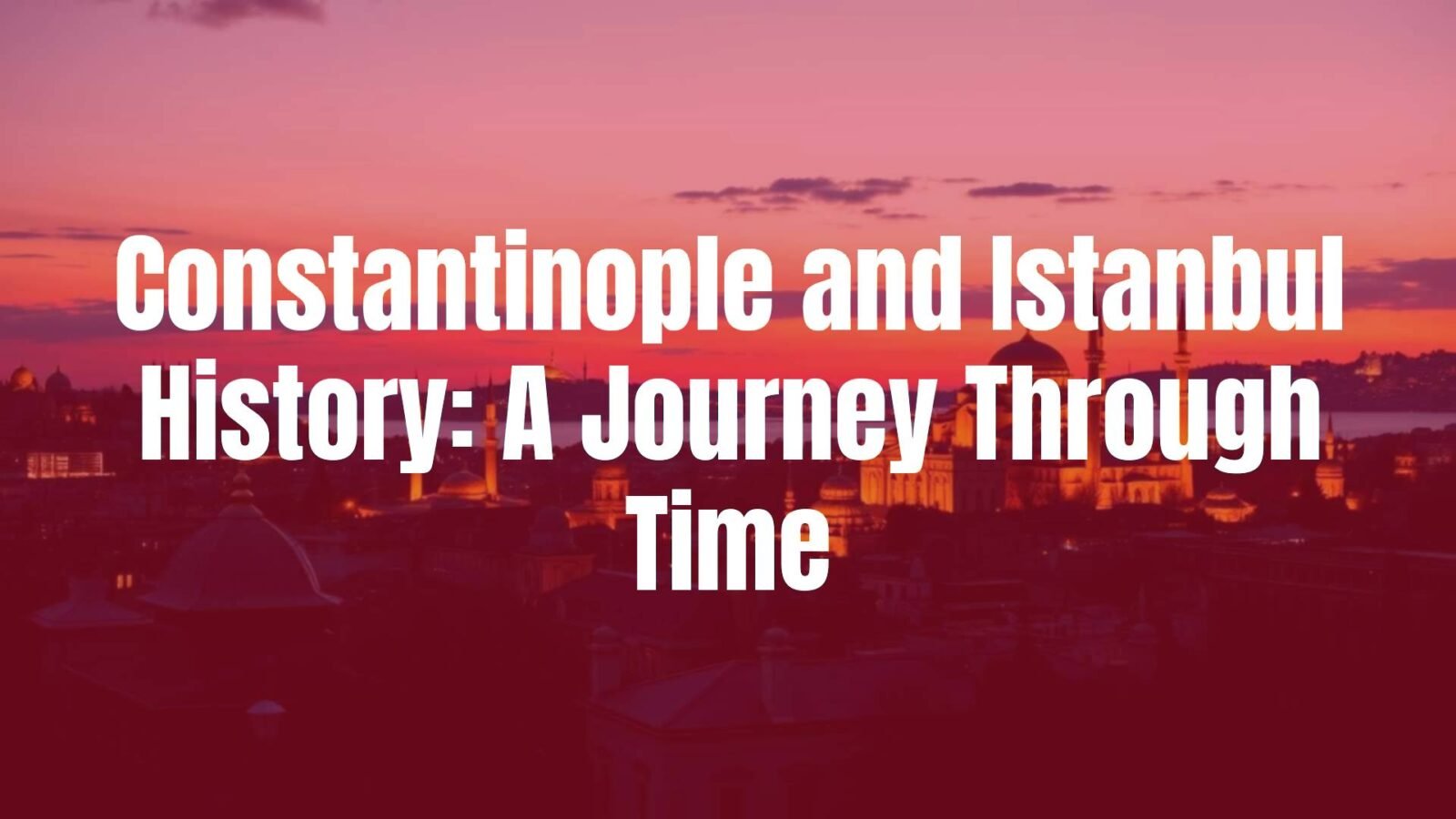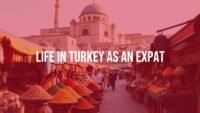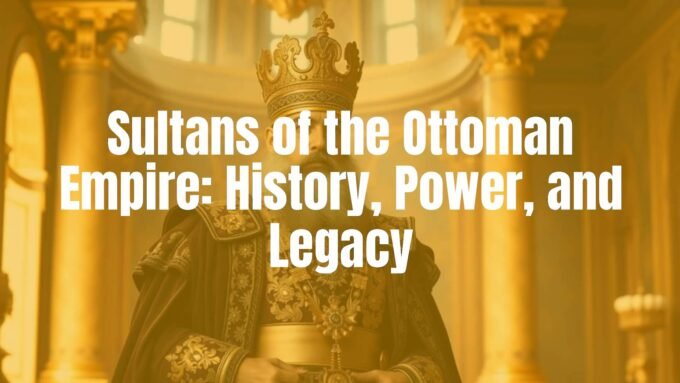The history of Constantinople, now called Istanbul, covers thousands of years, filled with the rise and fall of empires, the meeting and mixing of cultures, and the city’s ongoing role as a major world center. Starting as a small ancient settlement, it has become a lively modern city. Istanbul has always stood at the point where continents and civilizations meet, making its past full of important events and changes. The city’s story is more than just a list of rulers and dates; it shows human determination and the lasting impact of a key location.
The growth of this city from its earliest days to today can be seen as layers, each era leaving clear marks on its buildings and way of life. This article explains the history of Constantinople and Istanbul by looking at its many names, why its location is important, the main periods in its development, and the impressive buildings and traditions that still attract attention worldwide.

Names and Changes of the City
What were the original names before Constantinople?
Before it was known as Constantinople, this valuable spot had several earlier names, showing the different peoples who lived there over time. Pliny the Elder, in his work Natural History, wrote that the area was first called Lygos, a Thracian place that existed between the 13th and 11th centuries BCE. Little remains of Lygos, but fragments of walls near today’s Topkapı Palace are linked to it.
Once Lygos was deserted, Greek settlers from Megara arrived around 657 BCE. Led by Byzas, they built a new town called Byzantium (or Byzantion in Greek). Some say the name comes from the word “būzas” meaning “he-goat”, or directly from Byzas. Thanks to the good harbor known as the Golden Horn, Byzantium grew as a port city. Over the next centuries, Byzantium kept its independence but was sometimes ruled by other powers like the Persians, Athenians, Spartans, and Macedonians.
During Emperor Septimius Severus’ time in the early 3rd century AD, Byzantium was briefly called Augusta Antonina after being destroyed and rebuilt on behalf of his son Caracalla. That name didn’t last long, and after Caracalla’s death, the city was again called Byzantium.
Why the renaming to Constantinople?
The city got its famous name, Constantinople, after Roman Emperor Constantine I took over the area in 324 AD. He wanted a new capital for his empire because Rome was too far from the borders and too hard to manage. He decided that Byzantium was the best place for a “New Rome” (Nova Roma) because of its many natural advantages.
Byzantium’s peninsula was easy to defend, and the city was close to important areas that needed ruling. Constantine then started a huge building project to expand and beautify the city. On May 11, 330 AD, the city was officially dedicated to him as Constantinople, meaning “City of Constantine.”

The new name and capital marked an important change, with the city becoming a major Christian center. Like Rome, Constantinople was built on seven hills. After the Western Roman Empire weakened, Constantinople became richer and more important, earning nicknames like “Second Rome” and “Queen of Cities.” Locally, people often just called it “Polis” or “the City.”
When did Constantinople become Istanbul?
Constantinople served as the capital for the Roman, Byzantine, Latin, and Ottoman empires for over 1,600 years. While the name “Istanbul” was used in everyday speech after the Ottomans conquered the city in 1453, the name became official much later. “Istanbul” likely comes from the Greek phrase “eis tin Polin”, which means “to the city.”
Under the Ottomans, both “Kostantiniyye” (a form of Constantinople) and “Istanbul” were used in different settings. Western languages continued to use “Constantinople” well into the twentieth century. After Turkey became a republic and Ankara was made the capital in 1923, the government made Istanbul the official name of the city on March 28, 1930, and also asked other countries to use the new Turkish names for cities. Today, “Istanbul” is used almost everywhere, while “Constantinople” survives mainly in some church contexts and by historians.
Geographical Importance and the Bosporus
How did the city’s location shape its history?
More than anything else, the city’s place on the map made it special throughout its history. Built on a triangular peninsula, it controls a narrow crossing between Europe and Asia and guards the routes between the Mediterranean and Black Seas. This made it a prime spot for trade and the focus of many empires.
From when it was Byzantium, its deep harbor, the Golden Horn, brought ships and merchants from all directions. Even when the city was destroyed, its great position led to quick rebuilding. Constantine made it his capital because it was easy to defend by sea and land, and its supply lines were good. Strong defences kept Constantinople safe from many attacks for hundreds of years, making it one of Europe’s largest and richest cities for over a thousand years.
Its location helped it grow quickly as a trading center. People from different places came to trade, work, and live, making it a very mixed city and pushing its economic and cultural development.
Why is the Bosporus strait important?
The Bosporus is a narrow waterway that connects the Black Sea to the Sea of Marmara and then to the Mediterranean. It has always played a key role for Istanbul and the countries around the Black Sea because it is the only way for ships to travel in and out.
Whoever controlled the Bosporus also controlled trade and military access between north and south. The Byzantines built strong navies to protect it, and the Golden Horn was an ideal harbor. When the Ottomans prepared to take the city, Sultan Mehmed II built a fortress on the narrowest part of the Bosporus to help in the final siege. Even today, the Bosporus is a vital shipping lane that helps make Istanbul one of the most important cities between Europe and Asia.

Key Periods in the History of the City
| Era | Key Events / Facts |
|---|---|
| Ancient Origins/Greek Byzantium |
– Thracian settlement: Lygos (13th-11th c. BCE) – Megaran Greeks establish Byzantium (657 BCE) – Strategic port; site changed hands between Greek and Persian rulers |
| Roman/Byzantine Rule |
– Became a Roman outpost, then rebuilt by Septimius Severus (196 AD) – Constantine I re-founded city as Constantinople (330 AD) – Largest and richest European city for centuries; home of Hagia Sophia, massive wall defences |
| Ottoman Era |
– Ottomans conquered the city (1453) – Became capital of Ottoman Empire – Hagia Sophia became mosque; city rebuilt and populated |
| Republican / Modern Turkey |
– Empire ends after WWI; Republic declared in 1923 – Capital moves to Ankara – Name officially changed to Istanbul in 1930 – City transformed with new infrastructure, population growth |
Major historical events and sieges
- Several ancient sieges, including a Persian occupation (512 BCE).
- Septimius Severus’ destruction and rebuilding of the city (196-211 AD).
- Constantine’s re-founding as an imperial capital (330 AD).
- Arabs, Bulgars, and others repeatedly attack the city; survives thanks to strong walls and Greek fire.
- Sack of Constantinople by Crusaders (1204), leading to a Latin Empire.
- Ottoman conquest under Mehmed II (1453), marking the end of the Byzantine Empire.

Buildings and Cultural Heritage
Main religious buildings
- Hagia Sophia: Built in 537 AD as a Christian cathedral; world’s largest church for centuries. Became mosque (1453), then museum (1935), now again a mosque (2020).
- Hagia Irene: Early Byzantine church, never turned into a mosque.
- Little Hagia Sophia: Early domed church.
- Church of St. Savior in Chora: Well-known for its mosaics.
- Fatih Mosque: Ottoman mosque built on the site of an old church.
Other key buildings and monuments
- The Great Palace: Center of Byzantine power, now mostly ruins.
- The Hippodrome: Giant stadium for chariot races and public events; today, only three columns remain in Sultanahmet Square.
- Column of Constantine: Set up in 330 AD, marks the city’s center point.
- Grand Bazaar: Built after Ottoman conquest, one of the oldest and largest covered markets.
- Theodosian Walls: Thick land walls built in early 400s AD, keeping the city safe for centuries.
- Numerous underground cisterns; the Basilica Cistern is the most famous.
Public spaces and daily life
- Hippodrome: Social and political heart, especially during big events like the Nika riots (532 AD).
- Mese avenue: The city’s main road, doubling as a large market.
- Markets: Well-organized by Roman and Byzantine rules, run by guilds.
- Galata Tower: Near the old city chain, offering views of the city.
Society, Religions, and Culture
Religious changes: From Christianity to Islam
- Constantine I chose Christianity as the foundation for his new capital, turning the city into an important Christian center by 381 AD.
- The city was home to many churches and played a big part in the Eastern Orthodox world.
- After the Ottomans captured it in 1453, most important churches became mosques and the city became an Islamic center, but Christian and Jewish minorities also lived there.
- The Ecumenical Patriarchate remains in Istanbul today.
Learning and culture
- Imperial University: Started in 425 AD; helped preserve knowledge and support scholars.
- Libraries: The city’s libraries saved many ancient Greek and Roman texts.
- Artists and architects: Created mosaics, domes, and columns that influenced both Eastern and Western traditions.
- When the city fell in 1453, many scholars left for Italy, helping start the Renaissance.
The City’s International Importance
A place where civilizations meet
Istanbul’s unique place between Europe and Asia made it a meeting point for cultures, trade, and new ideas. For centuries, people from many backgrounds-Greeks, Romans, Byzantines, Ottomans, Jews, Armenians, and Europeans-lived in and influenced the city.
- Important stop on the Silk Road and other trade routes.
- Home to many languages and communities.
- Visited by traders and travelers from all over.
Trade and diplomacy
- The city controlled the Bosporus strait and had ports connecting east and west.
- Trade in spices, silk, and other luxury items kept the city rich.
- Guilds regulated markets; international merchants from Venice, Genoa, and beyond set up quarters in the city.
- At times, rivalries between local and foreign traders caused problems.
Constantinople/Istanbul Today
How to see the old Constantinople in present-day Istanbul
Old Constantinople is still very much present in modern Istanbul, especially in the historic areas inside the old walls and around Sultanahmet. Here are some ways to explore the city’s history:
- Hagia Sophia: Explore both the building’s Christian mosaics and Islamic designs.
- Hagia Irene and Little Hagia Sophia: Examples of early Byzantine churches.
- The Hippodrome: Now a square, it still has its ancient columns and obelisks.
- Theodosian Walls: Walk along the remaining ramparts, especially near Edirnekapı.
- Basilica Cistern: Visit this huge underground water storage site with its forest of columns.
- Chora Church: Famous for its Byzantine mosaics, a bit away from the main sites but worth the trip.
- Grand Bazaar: Dive into the centuries-old tradition of trade.
- Topkapı Palace: See the heart of the Ottoman Empire.

Istanbul continues to be a city where ancient and modern come together, allowing anyone to experience echoes of its legendary past while witnessing a vibrant present.














Leave a comment